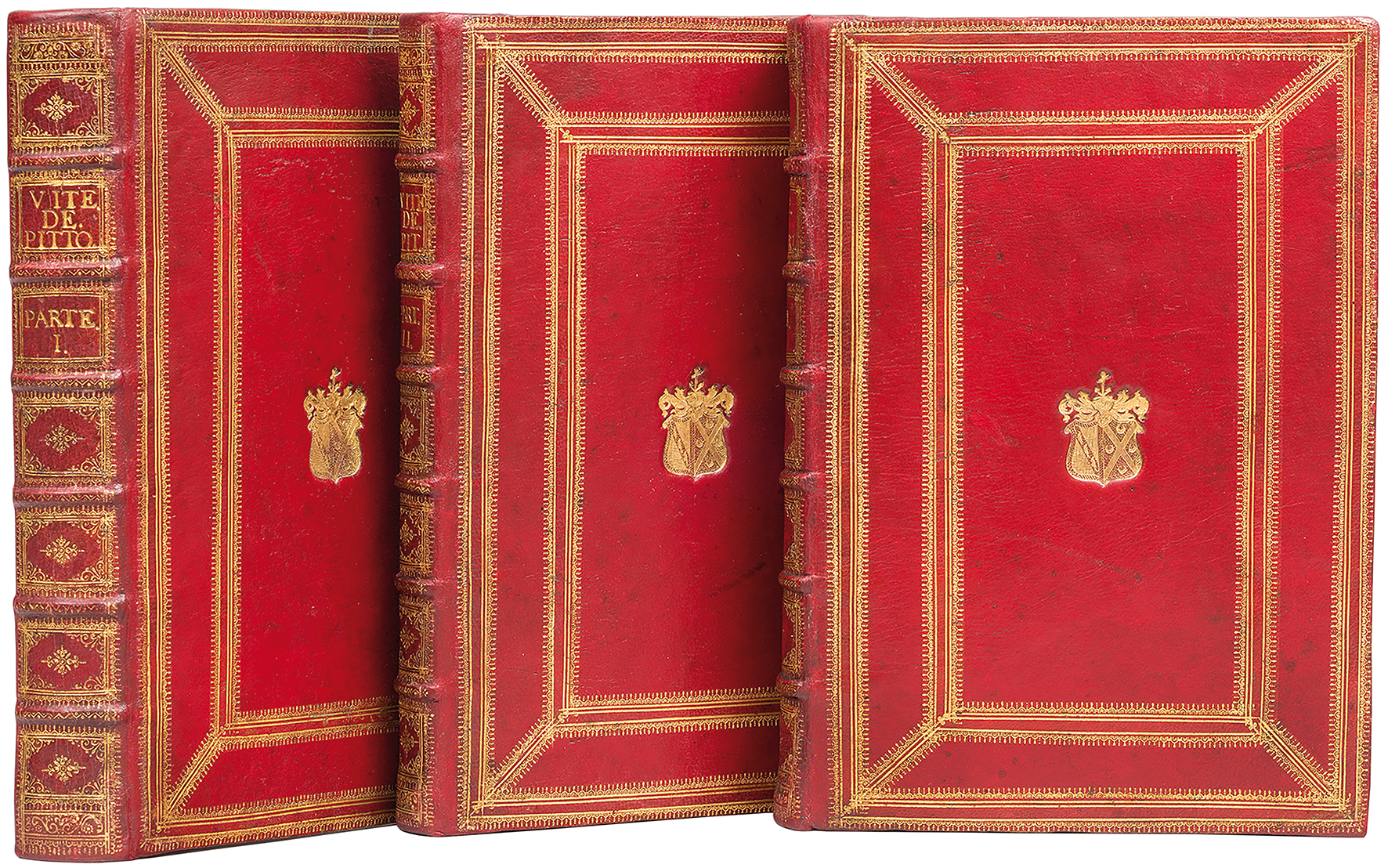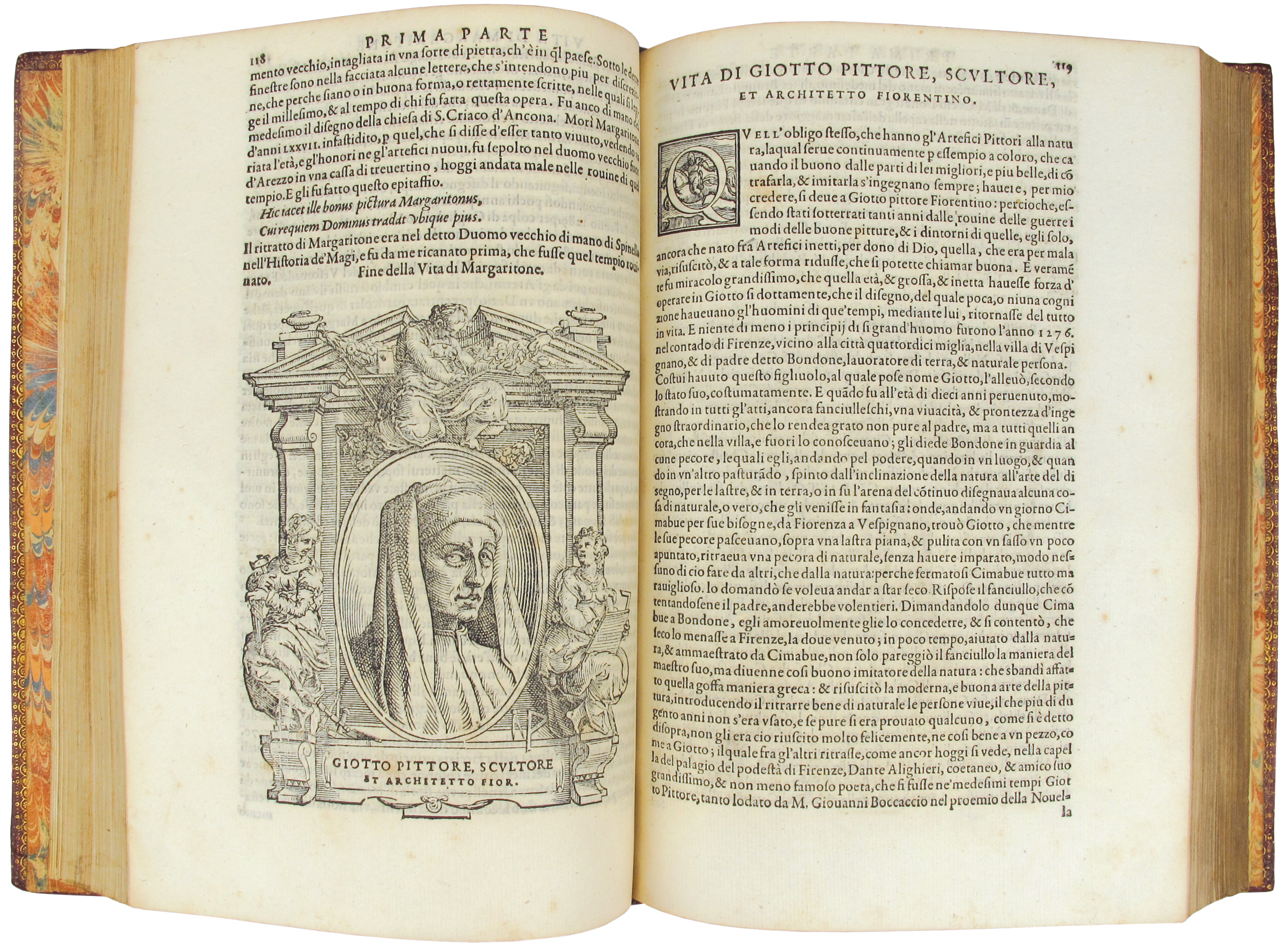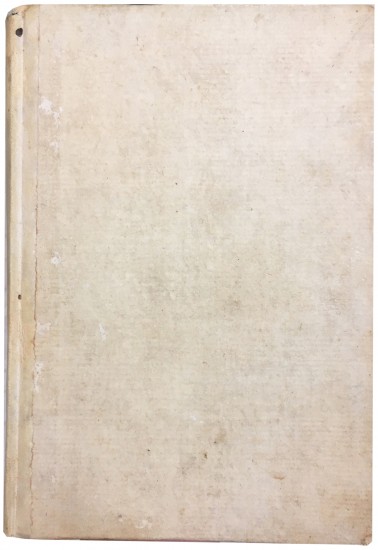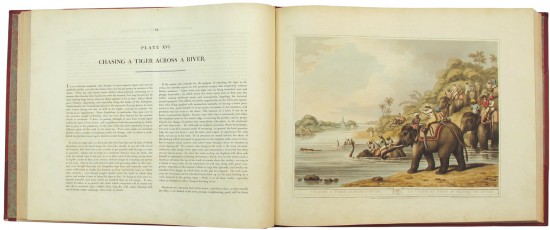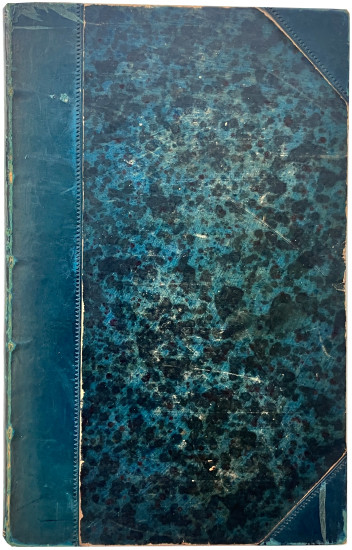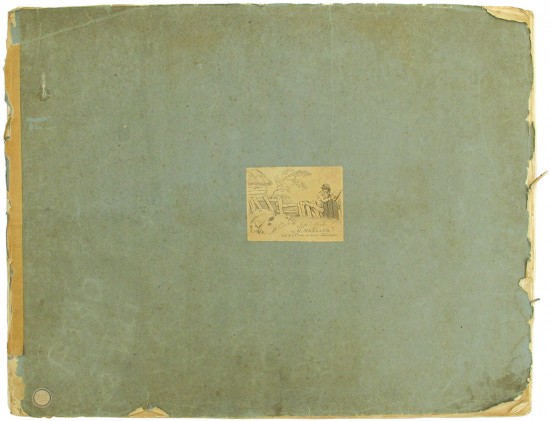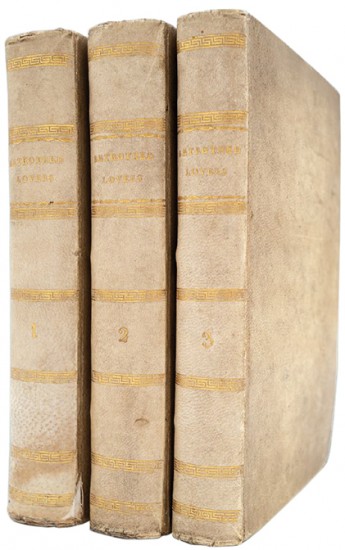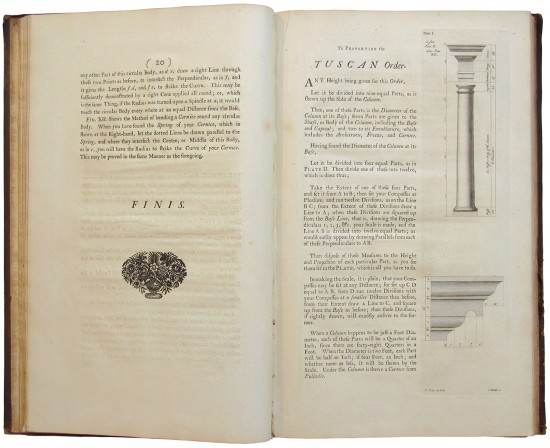Le Vite de' piu eccellenti Pittori, Scultori et Architettori, Scritte, & di Nuovo Ampliate da M. Giorgio Vasari Pit. et Archit. Aretino. Co' ritratti loro et con le nuove vite dal 1550. insino al 1567
Vasari, Giorgio
Florence. Giunta. 1568
The second edition of Vasari's famous 'Vite' but the first complete edition with much new material and the first to be illustrated.
A magnificent copy in seventeenth-century Italian red morocco with large margins of the first Western history of art and one of the most important books of the Renaissance.
First published in three parts in two volumes in 1550 by Lorenzo Torrentino, Vasari had provided biographies - with the exception of that for Michelangelo whom Vasari and his contemporaries idolised - of deceased artists only. Eighteen years were to pass before Vasari issued this second edition and he added so much new information that this second edition is considered preferable to the first. This second edition features woodcut portraits of the artists, adds a further 28 lives (including that of Titian), Vasari's own biography, a technical treatise on painting and updates much of the information in the previous edition to the year 1567.
This copy with the variant title for vol. I (see Mortimer) with blank verso and without the Medici arms; in copies without the variant, the block for the title, here incorporated within the woodcut frame of the title, is printed on the verso.
'Vasari's excellent sense of narrative ... and lively style combined with his wide personal acquaintance makes his 'Lives' a vital contribution to our understanding of the character and psychology of the great artists of the Renaissance, a term (rinascita) which he was the first writer to use ... It [the 'Lives'] became a model for subsequent writings on the history of art ... For its period it has remained the chief authority ... '. (Printing and the Mind of Man).
This copy was in the collection of Adélaïde Suzanne de Vismes (1753 - 1832), a poet and intimate of Queen Marie-Antoinette, who married the composer Jean-Benjamin de Laborde, a favourite of Louis XV and son of the financier Jean-François de Laborde, who became a 'fermier général'. In the nineteenth-century the Vasari passed into the collection of John Gardiner Kinnear (1794 - 1865), the Scottish financier, who had his arms stamped on the boards of each volume.
[PMM 88; Brunet V, 1096; Cicognara I, 2391; Mortimer Italian II, 515; Arntzen H48a].
A magnificent copy in seventeenth-century Italian red morocco with large margins of the first Western history of art and one of the most important books of the Renaissance.
First published in three parts in two volumes in 1550 by Lorenzo Torrentino, Vasari had provided biographies - with the exception of that for Michelangelo whom Vasari and his contemporaries idolised - of deceased artists only. Eighteen years were to pass before Vasari issued this second edition and he added so much new information that this second edition is considered preferable to the first. This second edition features woodcut portraits of the artists, adds a further 28 lives (including that of Titian), Vasari's own biography, a technical treatise on painting and updates much of the information in the previous edition to the year 1567.
This copy with the variant title for vol. I (see Mortimer) with blank verso and without the Medici arms; in copies without the variant, the block for the title, here incorporated within the woodcut frame of the title, is printed on the verso.
'Vasari's excellent sense of narrative ... and lively style combined with his wide personal acquaintance makes his 'Lives' a vital contribution to our understanding of the character and psychology of the great artists of the Renaissance, a term (rinascita) which he was the first writer to use ... It [the 'Lives'] became a model for subsequent writings on the history of art ... For its period it has remained the chief authority ... '. (Printing and the Mind of Man).
This copy was in the collection of Adélaïde Suzanne de Vismes (1753 - 1832), a poet and intimate of Queen Marie-Antoinette, who married the composer Jean-Benjamin de Laborde, a favourite of Louis XV and son of the financier Jean-François de Laborde, who became a 'fermier général'. In the nineteenth-century the Vasari passed into the collection of John Gardiner Kinnear (1794 - 1865), the Scottish financier, who had his arms stamped on the boards of each volume.
[PMM 88; Brunet V, 1096; Cicognara I, 2391; Mortimer Italian II, 515; Arntzen H48a].
3 parts in 3 vols. 4to. Woodcut pictorial title with architectural border to each vol. (the first showing the waking of the souls of dead artists, the remainder with the Medici arms), portrait of Vasari and 144 woodcut portraits after designs by Vasari or his pupils, each with title and within six differing borders of female figures representing the arts (woodcut portrait of Giulio Genga in vol. III with cancel slip correcting title), historiated or decorated woodcut initials and head- and tail-pieces throughout. Full seventeenth-century Italian red morocco, boards with gilt-tooled borders and gilt rules to surround central armorial vignettes, banded spine with title and decoration in gilt, turn-ins with gilt tooled borders, a.e.g.
#43301
